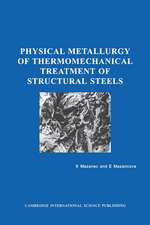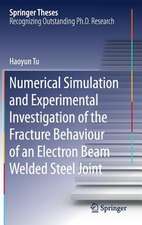Light Metals 2019: The Minerals, Metals & Materials Series
Editat de Corleen Chesonisen Limba Engleză Hardback – 27 mai 2019
The Light Metals symposia at the TMS Annual Meeting & Exhibition present the most recent developments, discoveries, and practices in primary aluminum science and technology. The annual Light Metals volume has become the definitive reference in the field of aluminum production and related light metal technologies. The 2019 collection includes papers from the following symposia:
1. Alumina and Bauxite
2. Aluminum Alloys, Processing, and Characterization
3. Aluminum Reduction Technology
4. Cast Shop Technology
5. Cast Shop Technology: Energy Joint Session
6. DGM-TMS Symposium on Lightweight Metals
7. Electrode Technology for Aluminum Production
8. REWAS 2019: Cast Shop Recycling Technologies
9. Scandium Extraction and Use in Aluminum Alloys
10. Ultrasonic Processing of Liquid and Solidifying Alloys
1. Alumina and Bauxite
2. Aluminum Alloys, Processing, and Characterization
3. Aluminum Reduction Technology
4. Cast Shop Technology
5. Cast Shop Technology: Energy Joint Session
6. DGM-TMS Symposium on Lightweight Metals
7. Electrode Technology for Aluminum Production
8. REWAS 2019: Cast Shop Recycling Technologies
9. Scandium Extraction and Use in Aluminum Alloys
10. Ultrasonic Processing of Liquid and Solidifying Alloys
Din seria The Minerals, Metals & Materials Series
- 17%
 Preț: 399.22 lei
Preț: 399.22 lei - 18%
 Preț: 1125.72 lei
Preț: 1125.72 lei - 18%
 Preț: 1381.43 lei
Preț: 1381.43 lei - 18%
 Preț: 2568.38 lei
Preț: 2568.38 lei - 20%
 Preț: 1563.43 lei
Preț: 1563.43 lei - 18%
 Preț: 1224.36 lei
Preț: 1224.36 lei - 18%
 Preț: 3719.04 lei
Preț: 3719.04 lei - 18%
 Preț: 1225.94 lei
Preț: 1225.94 lei - 18%
 Preț: 2193.35 lei
Preț: 2193.35 lei - 18%
 Preț: 948.92 lei
Preț: 948.92 lei - 18%
 Preț: 1109.16 lei
Preț: 1109.16 lei - 18%
 Preț: 1404.78 lei
Preț: 1404.78 lei - 15%
 Preț: 459.09 lei
Preț: 459.09 lei - 18%
 Preț: 1382.21 lei
Preț: 1382.21 lei - 15%
 Preț: 596.69 lei
Preț: 596.69 lei - 18%
 Preț: 1669.48 lei
Preț: 1669.48 lei - 18%
 Preț: 1386.17 lei
Preț: 1386.17 lei - 17%
 Preț: 495.19 lei
Preț: 495.19 lei - 18%
 Preț: 2550.40 lei
Preț: 2550.40 lei - 18%
 Preț: 1600.02 lei
Preț: 1600.02 lei - 15%
 Preț: 607.33 lei
Preț: 607.33 lei - 18%
 Preț: 1227.52 lei
Preț: 1227.52 lei - 18%
 Preț: 1697.90 lei
Preț: 1697.90 lei - 18%
 Preț: 2247.17 lei
Preț: 2247.17 lei - 18%
 Preț: 3100.31 lei
Preț: 3100.31 lei - 18%
 Preț: 1225.16 lei
Preț: 1225.16 lei - 18%
 Preț: 1398.80 lei
Preț: 1398.80 lei - 18%
 Preț: 1216.48 lei
Preț: 1216.48 lei - 18%
 Preț: 1576.37 lei
Preț: 1576.37 lei - 18%
 Preț: 2211.66 lei
Preț: 2211.66 lei - 18%
 Preț: 1862.03 lei
Preț: 1862.03 lei - 18%
 Preț: 947.35 lei
Preț: 947.35 lei - 18%
 Preț: 944.19 lei
Preț: 944.19 lei - 18%
 Preț: 3656.56 lei
Preț: 3656.56 lei - 18%
 Preț: 955.08 lei
Preț: 955.08 lei - 15%
 Preț: 644.18 lei
Preț: 644.18 lei - 18%
 Preț: 951.91 lei
Preț: 951.91 lei - 20%
 Preț: 628.09 lei
Preț: 628.09 lei - 24%
 Preț: 780.30 lei
Preț: 780.30 lei - 24%
 Preț: 867.65 lei
Preț: 867.65 lei - 15%
 Preț: 658.70 lei
Preț: 658.70 lei - 18%
 Preț: 1211.11 lei
Preț: 1211.11 lei - 15%
 Preț: 653.33 lei
Preț: 653.33 lei - 18%
 Preț: 1249.14 lei
Preț: 1249.14 lei - 18%
 Preț: 951.47 lei
Preț: 951.47 lei - 18%
 Preț: 1224.54 lei
Preț: 1224.54 lei - 15%
 Preț: 656.74 lei
Preț: 656.74 lei - 24%
 Preț: 860.46 lei
Preț: 860.46 lei
Preț: 2574.68 lei
Preț vechi: 3139.86 lei
-18% Nou
Puncte Express: 3862
Preț estimativ în valută:
492.65€ • 514.37$ • 407.74£
492.65€ • 514.37$ • 407.74£
Carte disponibilă
Livrare economică 14-28 martie
Preluare comenzi: 021 569.72.76
Specificații
ISBN-13: 9783030058630
ISBN-10: 3030058638
Pagini: 12000
Ilustrații: XXXVI, 1665 p. 1578 illus., 1266 illus. in color.
Dimensiuni: 210 x 279 mm
Greutate: 3.45 kg
Ediția:1st ed. 2019
Editura: Springer International Publishing
Colecția Springer
Seria The Minerals, Metals & Materials Series
Locul publicării:Cham, Switzerland
ISBN-10: 3030058638
Pagini: 12000
Ilustrații: XXXVI, 1665 p. 1578 illus., 1266 illus. in color.
Dimensiuni: 210 x 279 mm
Greutate: 3.45 kg
Ediția:1st ed. 2019
Editura: Springer International Publishing
Colecția Springer
Seria The Minerals, Metals & Materials Series
Locul publicării:Cham, Switzerland
Cuprins
Part 1. Alumina & Bauxite.- Roasting Pretreatment- low Temperature Digestion Method for Comprehensive Utilization of High-sulfur Bauxite.- Industrial Experience of Sinter Hydro-chemical Processing at Bogoslovsk Alumina Refinery.- Effect of Sintering Conditions on the Stability of 946-2CaO·SiO2 in High Sodium Carbonate Solution.- Research on Impurity Removal of Low Grade Bauxite.- Study on the Structure and Generation Mechanism of Intermediate (6AlO-OH) in Decomposition Process of Sodium Aluminate Solutions.- The Properties of Superfine ATH Precipitated by Carbonation Method.- Effect of Organic Impurity on Seed Precipitation in Sodium Aluminate Solution.- Fitness-for-service Assessment and Re-rating of Flawed Alumina Feeding Vessels.- Miniplant Tests of HCl Technology of Alumina Production.- Development and Usage of Detailed Models of Technology at RUSAL Alumina Refineries.- Features of Pseudoboehmite from Alumina Production.- Digital Transformation in Alumina Refining.- Thermodynamics Analysis on Process of Pelletizing Chlorination of Fly Ash.- Research on Alumina Preparation from Aluminium Chloride Solution by Electrolysis Process.- How Digitalization Can Further Improve Plant Performance and Product Quality - Outotec Pretium Advisory Tool for Alumina Calcination.- Expertimental Investigation on Reduction of Cast Iron from Bayer Red Mud and Laterite Nickel.- Analyzing the Bauxite Residue Amendment through the Addition of Ca and Mg Hydroxides Followed by Carbonation.- Comprehensive Utilization of Red Mud: Current Research Status and a Possible Way Forward for Non-hazardous Treatment.- Alumina, Iron and Titanium Extracting from Bauxite Residue with Low Lime Sinter Method.- Developing New Process for Selective Extraction of Rare Earth Elements from Bauxite Residue Based on Functionalized Ionic Liquids.- Effects of Reductive Roasting with Sodium Salts on Leaching Behavior of Non-ferrous Elements in Bauxite Ore Residue.- Specific Features of Scandium Behavior during Sodium Bicarbonate Leaching of Red Mud.- Flotation Separation of Pyrite from Refractory High-sulfur Bauxite.- Research on the Desulfurization of High Sulfur Bauxite.- Research on the Interaction between 1-butyl-2-mercaptobenzimidazole and Pyrite.- Flotation of Low-grade Bauxite Using Modified Humics as Depressant.- Research on the Adsorption of Humic Acid on Pyrite Surface.- Experimental Investigation on Desiliconization of Low-grade Bauxite by Flotation Process.- The Impact of Backwater Iron Ions on Bauxite Flotation.- Part 2. Aluminum Alloys, Processing and Characterization.- Grain Boundary Precipitation and Fracture Behavior of Al-Cu-Li Alloys.- Comparison of Texture and Surface Finish Evolution during Single Point Incremental Forming and Formability Testing of AA 7075.- Understanding the Co-precipitation Mechanisms of Al3(Sc, Zr) with Strengthening Phases in Extruded Al-Cu-Li Model Alloys.- Determining a Retrogression Heat Treatment to Apply during Warm Forming of a High Strength AA7075 Sheet Material.- Development of High-strength and High-electrical-conductivity Aluminum Alloys for Power Transmission Conductors.- The Combined Effects of Sr Additions and Heat Treatment on the Microstructure and Mechanical Properties of High Pressure Die Cast A383 Alloy.- Influence of Additional Elements (Si Ti and B) on the Castability, Corrosion and Mechanical Properties of A201 Alloys.- Effect of Ni Addition on the Solidification Process and Microstructure of Al-12%Si-4%Cu-1.2%Mn-x%Ni Heat-resistant Alloys.- Phase Formation of Monotectic Al-In and Al-Ga-In Alloys and Implications Thereof.- Investigations on Pb-free 6000 Series Aluminum Alloy for Machining Applications.- Optimization in Novel Partial-solid High Pressure Aluminum Die Casting by Taguchi Method.- Application of the Hot Stamping Process to Aluminum Alloy Structural Components.- Failure of 5000 and 6000 Series Aluminum Alloys in Modular Wastewater Treatment Aeration Tanks.- Grain Refinement of Al–Si–Mg Cast Alloys by Al3Ti3B Master Alloy.- Improving Bendability of Al-Mg-Si Alloy Sheet by Minor Alloying Element Addition.- Deep Drawing and Anodizing Quality Improvement in AA3003-O Alloy by Optimization of Homogenization, Rolling and Annealing.- Understanding Large-strain Softening of Aluminum in Shear at Elevated Temperature.- Assessments of Sc-containing Ternary Systems Al-Sc-Ti and Al-Sc-Zr within the Thermodynamic Database for Aluminium Alloys, TCAL5.- Multiscale Model for Al-Li Material Processing Simulation under Forging Conditions.- Investigation of Effect of Aging Treatment on Deformation Behavior of Al-Mg-Si Alloy Using Quasi-2D Polycrystalline Sample.- Development of Innovative Aluminum Alloys with High Mechanical Properties.- A General Formulation of Eutectic Silicon Morphology and Processing History.- Evaluation of Hot Tearing Susceptibility of 6000 Series Aluminum Alloys Using Constrained Solidification Test.- In-situ Fitness-for-Service Assessment of Aluminum Alloys Developed for Automotive Powertrain Lightweighting.- Research on the Effect of the Processing Parameters on Susceptibility of Liquation Cracking of Al Alloys during Refilled Friction Stir Spot Welding.- Factors Influencing the Cast Duration of Horizontal Continuous Ingot Casters.- On Si Redistribution during Friction Stir Processing of Cast Al-7%Si-0.4%Mg Alloys.- Equal Channel Angular Pressing of a Newly Developed Precipitation Hardenable Scandium Containing Aluminum Alloy.- Stiffness Improvement Through Alloying Elements in Al Alloys.- Formation Mechanism of Surface Segregation in Heated Mold Continuous Casting Al–Cu Alloy.- Effects of Extrusion and Heat Treatment Conditions on Microstructure and Mechanical Properties of an Al-Zn-Mg-Cu-Er Alloy.- Effects of Rare Earth Er Additions on Microstructure and Mechanical Properties of an Al-Zn-Mg-Cu Alloy.- Part 3. Aluminum Reduction Technology.- Maximizing Previous Pot Design to Have Higher Capacity.- On the Use of Multivariate Statistical Methods to Detect, Diagnose and Mitigate Abnormal Events in Aluminium Smelters.- Spike Detection Using Advanced Analytics and Data Analysis.- Speed, Agility and Simplicity (SAS) Recovery of Reduction Line-5 in Alba.- Partial Repair and Restart of a Damaged Aluminium Reduction Cell.- Discussion on Alumina Dissolution and Diffusion in Commercial Aluminum Reduction Cell.- Investigation of Alumina Concentration Gradients within Hall-Héroult Electrolytic Bath.- Study of Alumina Dissolution in Cryolitic Bath to the Vertical Soderberg (VSS) Aluminum Production Process.- Impacts of Sodium on Alumina Quality and Consequences for Current Efficiency.- Alucell: A Unique Suite of Models to Optimize Pot Performances and Design.- Anode Bottom Burnout Shape and Velocity Field Investigation in a High Amperage Electrolysis Cell.- CFD Modelling of Alumina Feeding.- Effect of Steel Multi-collector Bars on Current Density and Magnetohydrodynamic Stability in an Aluminum Reduction Cell.- Numerical Simulation Study on Gas Collecting System of 400kA Grade Aluminum Electrolytic Cell.- Study on 3D Full Cell Ledge Shape Calculation and Optimal Design Criteria by Coupled Thermo-flow Model.- The Successful Implementation of Energy Saving Technology Based on Steady Flow and Heat Preservation.- Current Efficiency in Hall-Héroult Cells: The Role of Mass Transfer at the Cathode.- Effects of Current Density on Current Efficiency in Low Temperature Electrolysis with Vertical Electrode Structure.- Relationship between Aluminium Electrolysis Current Efficiency and Operating Condition in Electrolyte Containing High Concentration of Li and K.- Evaluating Effects of Future Shared Mobility and Electrification Trends on Key Intermediate Indicator of Aluminum Transportation Demand: US Vehicle Fleet Size.- Improvement in Smelter Process Analysis through EGA Lab Modernization.- Two-stage Pot Gas Treatment Technology Allowing the Production of Sodium Sulfate.- Improved Abart Gas Treatment and Alumina Handling at the Karmøy Technology Pilot (KTP).- Alternative Roof-vent Emission Monitoring Method.- SPL: An Update.- Bubble Dispersion States in the Zinc Oxide Desulfurization Injection Blow Tank.- Decision Matrix for Pneumatic Conveying and Distribution of Material.- Very Low Energy Consumption Cell Designs: The Cell Heat Balance Challenge.- APXe Cell Technology: 7 Years of Low Energy Operation.- Development and Industrial Application of NEUI600 High Efficiency Aluminum Reduction Cell.- RA-550 Cell Technology: UC RUSAL’s New Stage of Technology Development.- DX+ Ultra Industrial Version: Preheat Start up and Early Operation.- Selecting Technology for Achieving 300,000 T/Year - Why Do We Need to Compete Pot Technology?.- AP44 Development at Alma.- EGA New D20+ Technology with Reduced Energy Consumption.- Potline Start up without Anode Effect Frequency.- Thermo-electrical Modeling of an Aluminum Reduction Cell.- Restarting Electrochemical Cell with a Cold Metal (D18 Cell).- Part 4. Cast Shop Technology.- Root Cause Analysis Findings of a Force 3 Explosion.- Condensation Warning System for Dry Material Storage.- A New Aluminium Crucible Skimmer (ACS) for Smelter Plants – Main Benefits Further to Two Years of Experimentation in Industrial Environment.- Drive-in Feeding of Crucibles for Casting Machine.- In-line Salt Fluxing Process with an FFDTM Industrial Experience with a Box-Type Degasser.- The "Alcoa Filter System": A Cost Effective Solution for Enhanced CFF Performance.- Continuous Centrifugal Casting: A Revolutionary Process for Casting Aluminium Tubes.- Development of a Prototype Unit for Continuous Centrifugal Casting of Aluminium Tubes.- Constellium’s R&D on the Use of Power Ultrasound in Liquid Aluminum: An Overview.- Molten Metal Cleanliness: Recent Developments to Improve Measurement Reliability.- On-site Benchmark of LiMCA II vs. LiMCA III for Monitoring of Non-metallic Inclusions in Liquid Aluminium.- Discussion of Bi-film Index and LiMCA Data in Industrial Aluminum Remelting Trials.- Inclusion Composition Determination by In-line LIBS Measurement – Plant Assessment.- An Innovative Ultrasonic Technology for the Continuous Quality Monitoring of Liquid Aluminum on Casting Lines.- Ultrasonic Doppler Velocimetry in Liquid Aluminum.- Nitridation Reaction of Aluminum and Magnesium in 5XXX Series Aluminum Alloy.- Experimental Study and Numerical Analysis of Cracking during DC Casting of Large Dimension 7075 Aluminium Billets.- The Benefits of Ultrasonic Treatment of Molten Metal for Slabs Casting at UC RUSAL Facilities.- Effect of Ultrasonic Melt-treatment and Cooling Rate on Microstructure of Multi-phase Reinforced Al Alloy.- XPS Examination of the Oxide-Metal Interface of an Aluminum-Magnesium Alloy Containing Beryllium.- Innovative technology for a flawless rolling slab casting process.- Robustness of Forged Part Mechanical Properties to Casting, Forging and Heat Treating Process Variation.- Analysis of Laser Marking Performance on Various Non-ferrous Metals.- Continuous Casted Aluminum Flat Products Corrosion Characteristic According to Downstream Process.- Controlling the Microstructural Evolution during Soft Annealing of Cold Rolled Twin-roll Cast AlMnMg Alloys by Homogenization Heat Treatment.- Investigation of Elemental Distribution in the Sheet Sections after Aluminum Continuous Sheet Casting, Cold Rolling and Heat Treatment Processes.- Tailoring the Materials Properties with a Holistic Approach From Casting to Back Annealing.- Study of the Effect of the Surface-roughness of Dies and Tooling for HPDC on Soldering.- Electrochemical Characterization of Al-Li-Cu-Mg Alloys.- Shaping the Mechanical Properties of AlSi30 Alloy Cast by Rapid Solidification.- Part 5. Cast Shop Technology: Energy Joint Session.- Productivity and Energy Efficiency Improvements at Two Reverberatory Furnaces at Alcoa, Norway.- The Application of ALTEK Stirring Technology to a 90MT Melting Furnace at ALCOA Moesjen, Norway.- Case Study of Air Cooled Electromagnetic Stirred Melting Furnace at Hydro Henderson.- Efficiency of the Casting Process Starts in the Melt Shop.- Praxair’s OPTIVIEWTM Image Analysis System for Enhanced Combustion Control on Aluminum Tilting Rotary Furnace.- Aluminum Melting Furnace Pressure Control.- Resource efficiency analysis of high pressure die casting process.- Gas Fired Holding Furnace Modeling for Efficient Operation.- Part 6. Cast Shop Technology: Fundamentals of Aluminum Alloy Solidification Joint Session.- In-situ Study of Solidification Kinetics of Al-Cu and Al-Ce Alloys with Application of Neutron Diffraction.- Quantifying Effects of Grain Refiner Addition on Fe-rich Intermetallics Solidification of Al-Si-Cu Alloys Using In Situ Synchrotron X-ray Tomography.- An Investigation on Si Refinement Mechanism of Hypereutectic Al-Si via Applying Ultrasonic Vibrations.- Observations of Microhardness and Segregation in Al-Zn and Zn-Al Specimens with Columnar-to-Equiaxed Grain Transition.- Impact of Inlet Flow On Macrosegregation Formation Accounting for Grain Motion and Morphology Evolution in DC Casting Of Aluminium.- Effects of Microstructure on Hot Cracking Behavior in Al-Zn-Mg-Cu Alloys.- Effective Nanoparticles Feeding Treatment in Casting of A356/ZrO2 Nano-reinforced Composite.- Part 7. Cast Shop Technology: Recycling and Sustainability Joint Session.- Recycling of Oxide from Dross into Aluminum Electrolysis Cells.- Behavior of Mg-Si-rich Phases in Aluminum Can Sheets and Their Impact on Metal Oxidation during Industrial Thermal Pre-treatment.- Potential for Handheld Analyzer to Address Emerging Positive Material Identification (PMI) Challenges.- Dissipative Use of Critical Metals in the Aluminum Industry.- In-situ Observation of Dross Formation during Melting of Al-Mg Alloy.- The Implementation of a Comprehensive Dross Management Program at Constellium Ravenswood.- Environmental Impacts of Aluminum Dross after Metal Extraction.-Promotion of Separation of Two Phase Liquid Metals by Applying Mechanical Vibration.- Part 8. Electrode Technology Symposium for Aluminum Production.- Influence of Crushing Technology and Particle Shape on the Bulk Density of Anode Grade Petroleum Coke.- Study on the Calcination Performance and Desulfurization Mechanism of Petroleum Cokes with Different Sulfur Contents between 700-1100.- Rotary Hearth Calcining of Petroleum Cokes.- Effects of High-Sulfur Cokes on Physicochemical Properties of Prebaked Anodes in Aluminium Electrolysis.- The Research and Industrial Application of An Improved Impact Cleaning Technology of the Double Anode Butts in Aluminium Electrolysis.- Analysis on the Material Balance Based on the Calcination Characteristics of a Chamber Calciner.- Formation of Aluminium Carbide in Hall-Héroult Electrolysis Cell Environments.- The Research and Trial of the Aluminum Electrolysis Cells with Current Flowing Out from the Bottom.- Laboratory Study of the Impact of CathodeGrade on the Formation of Deposits on the Aluminium Cathode Interface in Hall-Héroult Cells.- Understanding the Anode Porosity as a Means for Improved Aluminium Smelting.- Effect of Changes in Anode Top Cover Composition on Anode Butt Quality.- Inert Anodes – the Blind Alley to Environmental Friendliness?.- Role of the Porosity of Carbon Anodes in the Nucleation and Growth of Gas Bubbles.- Challenges and Successes of Conducting Trials for Anode Design Modification.- Study on Optimization of Anode Structure for Aluminum Reduction Cell.- Effect of Cover Material on the Oxidation Speed of Prebaked Anodes.- Interaction between Anode Aggregate and Binder in the Sessile Drop Wetting Test.- Development and Application of Large-scale Shaft Kilns.- Study on the Property and Desulfurization Mechanisms of Petroleum Cokes with Different Sulfur Contents from 1200 to 280.- The Current Status and Development Trend of the Prebaked Anode Market in China.- Transport of Sodium in TiB2 Materials Investigated by a Laboratory Test and DFT Calculations.- Multi-scale Modelling of TiB2 Degradation Using Crystal Elasticity Model and Density Functional Theory.- Simulation on the Initial Stage of Sodium-Graphite Intercalation Using First Principle Calculation.- Cathode Structure Optimization Research for Aluminum Reduction Cell.- Research on the Penetration of Potassium-based Electrolyte into Dry Barrier Materials.- Development and Application of Electrocalciners with Increased Calcination Temperature.- 3D Transient Modelling of a Complete Fire Line for Anode Baking Furnace Design and Optimization.- A Study of Anode Baking Gas Composition.- Improved Compaction Method for the Production of Large Scale Anode Paste Samples for Thermo-mechanical Characterization.- Systemic Analysis for the Selection of Anode Baking Furnace Refractories.- Numerical Investigation of the Thermomechanical Behaviour of Anode Butt.- Method of Defining the Degree of Impregnation of the Dry Aggregate with Pitch in the Process of Anode Production.- Research and Application for Large Scale, High Efficiency and Energy Saving Baking Furnace Technology.- Opportunities and Challenges Associated to Green Anode Plant Upgrade for Smelter Amperage Creeping.- Part 9. Perfluorocarbon Generation and Emissions from Industrial Processes.- Conditions and Mechanisms of Gas Emissions from Didymium Electrolysis and its Process Control.- Perfluorocarbon Formation during Rare Earth Electrolysis.- PFC Evolution Characteristics during Aluminium and Rare Earth Electrolysis.- Evaluation of Time Consistency when Quantifying Emissions of Perfluorocarbons Resulting from Low Voltage Anode Effects.- Low Voltage PFC Measurements and Potential Alternative to Reduce Them at Alcoa Smelters.- New Approach for Quantification of Perfluorocarbons Resulting from High Voltage Anode Effects.- New Algorithm for Calculating CF4 Emissions from High Voltage Anode Effects.- Validation of Online Monitoring of PFC by QCL with FTIR Spectroscopy.- PFCEmission Reduction in the Semiconductor Industry.- Challenges in estimating global CF4 and C2F6 emissions.- An Estimation of PFC Emission by Rare Earth Electrolysis.- Updated Factors for Calculating PFC Emissions from Primary Aluminum Production.- PFCs from the Chinese Aluminium Sector – Challenges in Emissions Accounting and Further Characteristics.- Part 10. Scandium Extraction and Use in Aluminum Alloys.- Scandium Recovery from the Nyngan Laterite Project in NSW.- Extraction of Scandium from Lateritic Nickel-cobalt Ore Leach Solution by Ion Exchange: A Special Study and Literature Review on Previous Works.- Electrochemical Formation of Alloys of Scandium in Molten Salts.- Direct Method for Producing Scandium Metal and Scandium-aluminium Intermetallic Compounds from the Oxides.- Sc Applications in Aluminum Alloys: Overview of Russian Research in the 20th Century.- Effect of Treatment Parameters on Structure, Mechanical and Corrosion Properties of Al-Mg-Sc Alloy Forgings with ReducedConcentration of Scandium.- Mechanical Properties and Applications of Aluminum Scandium Alloys at Elevated Temperatures.- Scandium-enriched Nano-precipitates in Aluminum Provide Enhanced Coarsening and Creep Resistance.- The Effect of Scandium and Zirconium on the Microstructure, Mechanical Properties and Formability of a Model Al-Cu Alloy.- Influence of the Al3(Sc,Zr) Dispersoids and the Stretching on the Natural Ageing Behavior of a Binary Al-4wt%Cu Alloys.- Design and Processing Conditions of Hypoeutectic Al-Cu-Sc Alloys for Maximum Benefit of Scandium.
Notă biografică
About TMS
The Minerals, Metals & Materials Society (TMS) is a member-driven international professional society dedicated to fostering the exchange of learning and ideas across the entire range of materials science and engineering, from minerals processing and primary metals production, to basic research and the advanced applications of materials. Included among its nearly 13,000 professional and student members are metallurgical and materials engineers, scientists, researchers, educators, and administrators from more than 70 countries on six continents.
The Minerals, Metals & Materials Society (TMS) is a member-driven international professional society dedicated to fostering the exchange of learning and ideas across the entire range of materials science and engineering, from minerals processing and primary metals production, to basic research and the advanced applications of materials. Included among its nearly 13,000 professional and student members are metallurgical and materials engineers, scientists, researchers, educators, and administrators from more than 70 countries on six continents.
Caracteristici
Definitive reference in the field of aluminum production and related light metal technologies Annual volume that has presented the most recent developments, discoveries, and practices in primary aluminum science and technology for more than 45 years Covers leading-edge developments on alumina and bauxite, aluminum alloys, processing, characterization, reduction, cast shop and electrode technology, and melt refining

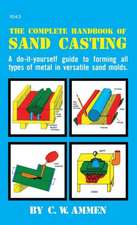
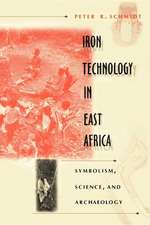
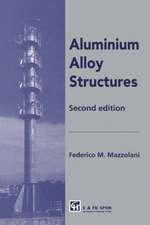
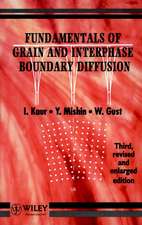

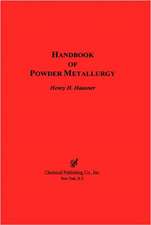

![Machine Tool Technology Basics [With CDROM] [With CDROM]](https://i4.books-express.ro/bt/9780831131340/machine-tool-technology-basics-with-cdrom-with-cdrom.jpg)


